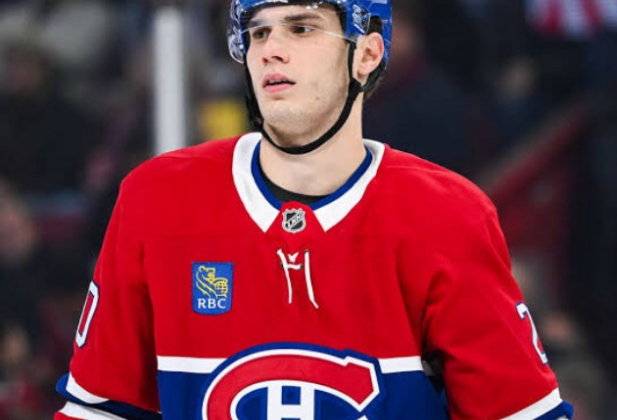In a season filled with highs and lows, the Montreal Canadiens and their promising rookie, Juraj Slafkovsky, found themselves at the center of a heated debate following a controversial hit that led to a two-game suspension. The incident not only impacted the team’s dynamics but also ignited discussions across the hockey community about player safety, rookie conduct, and the responsibilities of young talents in the NHL.
The Incident: A Rookie’s Misstep
On November 8, 2022, during a tightly contested game between the Montreal Canadiens and the Detroit Red Wings, 18-year-old Juraj Slafkovsky delivered a hit from behind on Red Wings forward Matt Luff. The check sent Luff head-first into the boards, resulting in a significant injury that required wrist surgery and sidelined him for 10 to 12 weeks. Slafkovsky was immediately assessed a five-minute major penalty and a game misconduct for boarding.
The NHL’s Department of Player Safety reviewed the play and subsequently suspended Slafkovsky for two games without pay, citing the dangerous nature of the hit and the resulting injury.
Reactions: A Divided Hockey Community
The suspension sparked a wide range of reactions from players, coaches, analysts, and fans. Some argued that the punishment was appropriate given the severity of Luff’s injury and the need to deter dangerous plays, especially from young players still adapting to the NHL’s pace and physicality.
Red Wings head coach Derek Lalonde commented, “It’s the exact hit you want to try to avoid, because of exactly what happened. A player got seriously injured. It is what it is. The right call was made.”
Others felt that the suspension was too harsh for a rookie still learning the game’s nuances. They pointed out that Slafkovsky had no prior history of disciplinary issues and that the hit, while unfortunate, was not malicious in intent.
Slafkovsky’s Response and Growth
Following the suspension, Slafkovsky expressed remorse for the incident and took the time to reflect on his playing style. He acknowledged the importance of playing aggressively but emphasized the need to do so within the rules to ensure the safety of all players.
Throughout the remainder of the season, Slafkovsky demonstrated significant growth, both in his on-ice performance and his understanding of the game’s responsibilities. He became more disciplined in his physical play, focusing on clean checks and positioning. His commitment to improvement was evident in his statistics, recording 20 goals and 50 points by the end of the season.
The Broader Implications
The incident and its aftermath highlighted the challenges young players face when transitioning to the NHL. The league’s emphasis on speed and physicality requires a delicate balance between assertive play and adherence to safety protocols.
For the Canadiens, the situation underscored the importance of mentorship and guidance for their rookies. Ensuring that young talents like Slafkovsky receive proper coaching on safe play techniques is crucial for their development and the team’s success.
Conclusion
Juraj Slafkovsky’s two-game suspension served as a pivotal moment in his rookie season, offering lessons in accountability, growth, and the importance of player safety. While the incident was a setback, it became a catalyst for Slafkovsky’s maturation as a professional athlete.
As the hockey community continues to discuss and analyze such events, the focus remains on fostering an environment where young players can thrive while upholding the standards and integrity of the game.
